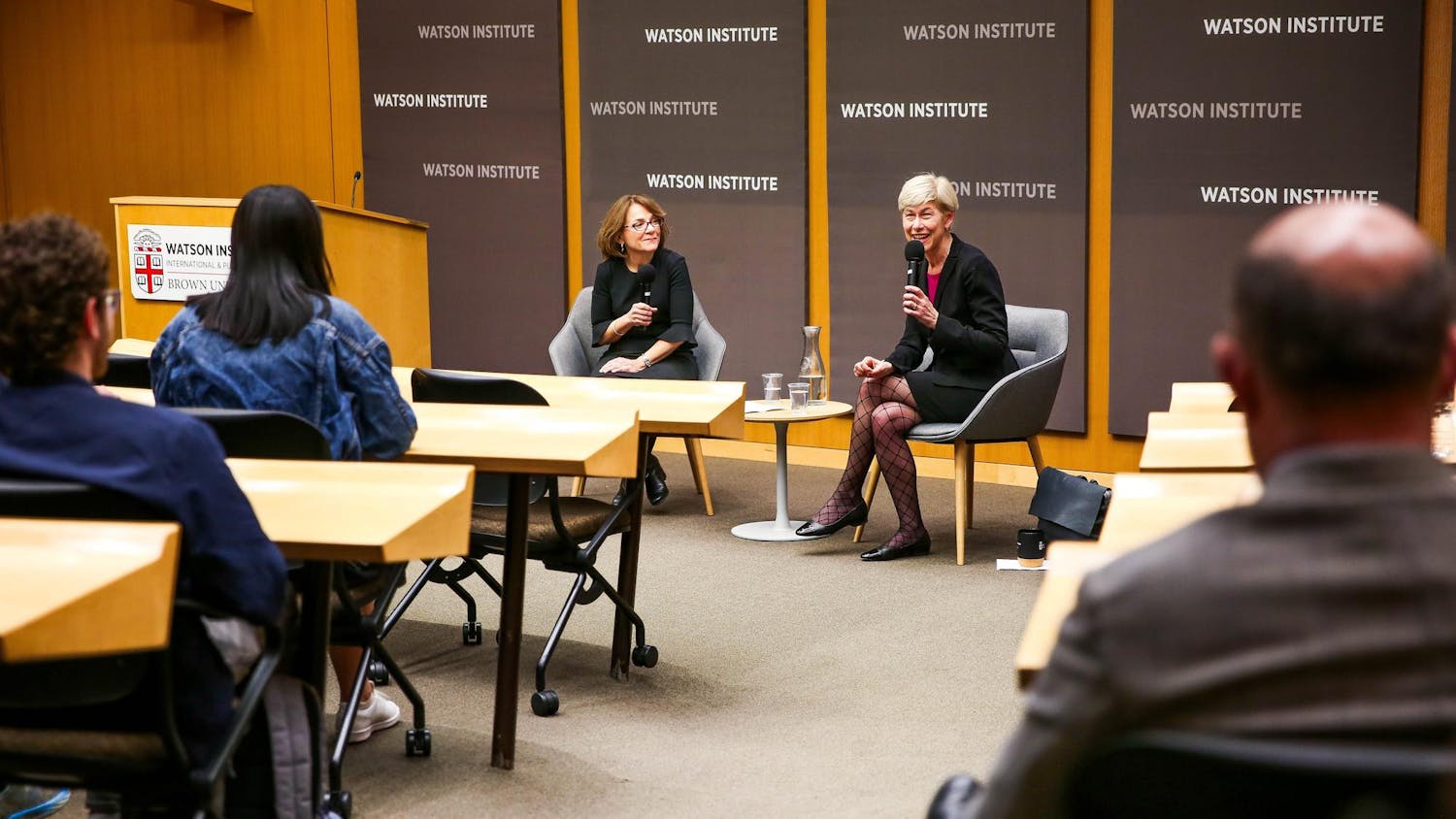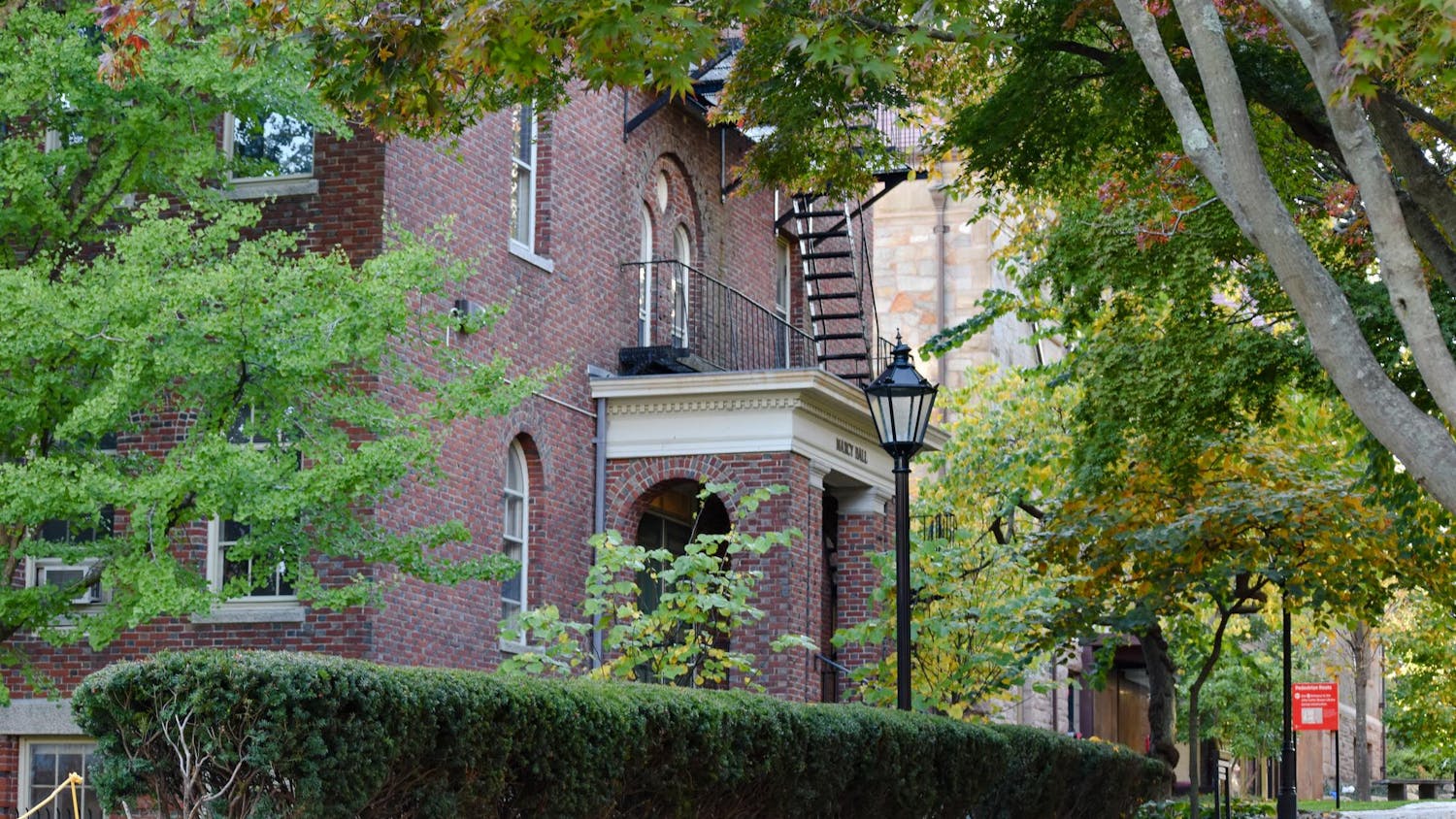Most students on campus have no opinion on how President Christina Paxson is handling her job in her first year, according to a Herald poll conducted earlier this semester. Of the students polled, 69.3 percent had no opinion, 17.5 percent somewhat approve, 10.9 percent strongly approve, and 2.3 percent either somewhat disapprove or strongly disapprove.
More females than males indicated they approve of how Paxson has been handling her job - 31 percent versus 26 percent, respectively. Four percent of males disapproved of Paxson in some capacity, while less than 1 percent of females did.
Most students interviewed said they do not know enough about Paxson to assess her performance. Since Paxson has not yet executed any major initiatives, students' judgments seem to be based mostly on first impressions.
Students cannot judge Paxson at this point in time, said Jonathan Sit '15. "I haven't seen her do much yet," he said.
Kevin Carty '15, a Herald opinions columnist, said he could not yet pass judgment on Paxson. Though he has a positive view of former president Ruth Simmons, "everything I know about her is retroactive and came over the course of a decade," he said.
Tim Schlenger '16 said he does not know much about the president beyond some positive comments he heard from others. Paxson is an established face on campus, said Will Adams '16. "I recognize her when I see her," he said. Beyond that, he said he has no particular feelings toward her.
Paxson is qualified and intellectual as well as popular, said Michael Alim '12.5. But "compared to Ruth, the enthusiasm is much more muted," he said. He attributes this neutrality to students feeling that "the president isn't a primary concern."
Elizabeth Goodspeed '16, a sophomore in the Brown/Rhode Island School of Design dual degree program, said that she thinks positive opinions toward Simmons arose partly from personal events like dinners with the president. At this point in time, students do not have a sense of Paxson's personality, she added.
"I'd love to know more about her, and I know she will do well," Goodspeed said.
Zach Rufa '14 said he has a positive opinion of Paxson based on his first impression of her. Rufa, a theater and literary arts concentrator, saw Paxson at a Theater Cabaret event.
"It was heartening to see and hear that she is a supporter of the arts and theater," he said. Interactions like these form students' opinions, he said. Though Rufa knows Simmons was a popular president, it is difficult for students to identify policies attributed to her, he said.
Lisa Cheung '13 said she is indifferent toward Paxson. But she said she would have preferred Simmons to remain at Brown a bit longer, since Simmons was the president during her first three years at Brown. "It's disappointing to know she won't be graduating with me," Cheung said.
Administrators and professors felt that students' neutral attitudes are to be expected at the beginning of a president's term but will likely trend toward the positive over time.
Chancellor Emeritus Artemis Joukowsky '55 P'87, who has worked with five University presidents, said that neutral attitudes are to be expected in the student body right now. But he predicted that attitudes would shift since Paxson is "an open-minded and thoughtful person" who is "a perfect sequel to Ruth Simmons." Paxson is a good listener who "asks the right questions," he said. "I have in a short period learned to respect her, admire her," he added.
There will be a lag time during which students form opinions of the president, said Janet Cooper-Nelson, University chaplain. "I expect it will take a bit of time for students to be involved in projects that the president is doing," she said. The poll's results are "an indication of the time it takes for a student to form an opinion," she said. In the meantime, initial reactions from students are based on how well-known a figure is when arriving on campus and are usually "not based on real experience of the person," she said.
When students do interact with the president, they "will come away from those associations ... enormously impressed" despite this being a "slower, quieter process," Cooper-Nelson said.
It is not possible to directly compare the early stages of Simmons' and Paxson's presidencies, Cooper-Nelson said.
"Ruth came at a time when the University was at greater risk," Cooper-Nelson said.
Methodology
Written questionnaires were administered to 959 undergraduates Oct. 17-18 in the lobby of J. Walter Wilson and the Stephen Robert '62 Campus Center during the day and the Sciences Library at night. The poll has a 2.9 percent margin of error with 95 percent confidence. The margin of error is 4.4 percent for the subset of males and 3.9 percent for females.
Find results of previous polls at thebdh.org/poll.
ADVERTISEMENT




